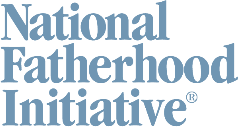
Do you struggle getting an equal number of moms and dads in your parenting program?
If you answered yes, you aren’t alone. I’ve conducted polls with hundreds of practitioners during my in-person and virtual workshops and found that 70 to 80 percent have less than 10 percent of dads participating in their parenting program.
If your parenting program looks similar, there’s good news. The 90 percent of moms you’ve already connected with are your greatest asset to increase father engagement.
Why?
Studies demonstrate that when moms perceive their partners as motivated and competent to engage in child care responsibilities, dads were more involved in childcare.
The Paternal Identity, Maternal Gatekeeping, and Father Involvement study, for example, states that the relationship between dads’ perceived investment in their actual levels of paternal involvement are moderated by moms’ beliefs about the role of the dad, and there’s a strong implication that moms’ perceptions of the paternal role are better predictors of father involvement than dads’ own perceptions of the paternal role.
So, given moms’ powerful influence on dads’ motivation to improve their fathering skills, here are some tactics that you can use to raise moms’ awareness of dads’ irreplaceable role in their children’s lives and increase dads’ participation in your parenting program to boot.
Engage Moms During Intake
One of the best opportunities to lay a solid foundation with moms to help increase dads’ participation in your program is during the initial intake. During this time:
- Explicitly ask moms about their relationship quality with the dads and the dads’ level of engagement with their children. Explain that dads—biological and social, such as current boyfriends—are welcome to participate in the parenting program. If your organization has other activities for dads, mention them.
- Provide resources that raises moms’ and dads’ awareness of his important role. National Fatherhood Initiative’s®(NFI’s) The Importance of An Involved Father brochure, for example, covers how kids do better in different ways when dads are involved in their lives. It also provides actions moms and dads can take to help their children have an involved dad. This type of brochure can open moms’ and dads’ minds to the importance of dads’ attendance in your parenting program.
Expect Moms and Dads Will Participate
A growing number of parenting programs expect moms and dads will participate. To reinforce this expectation:
- When you have the initial interaction with a family, clearly state that the program is for both moms and dads and that dads’ participation is vital for the parents’ success in raising healthy children. Depending on a family’s circumstance, you may find that the dad is not available and there are times when you can only engage the mom. That’s okay. Remember you are planting seeds that might bear fruit later as the dad becomes more engaged in the program over time.
- Address moms and dads when you send out communications related to your parenting program and related services.
Understand the Why’s
It’s important to understand why moms might resist dads’ participation in the parenting program and that may affect dads’ decision to participate. Consider the following possibilities and facts:
- There may be valid reasons for moms’ resistance, such as concern for their children’s safety, or their own. Sometimes there may be other reasons. Some moms find it difficult to relinquish any level of responsibility for the family to their children’s dad. Involved dads can threaten other moms’ identity as the main caregiver. Regardless, getting to that deeper “why” will help you better engage moms around dads’ involvement.
- The National Survey of Fathers' Attitudes on Fathering revealed that the majority of dads think they are replaceable. When dads think they’re inadequate as parents, tell them that they have a unique and irreplaceable role in their children’s lives, then back it up with data.
- Share research about the different parenting styles of moms and dads. Kyle Pruett has produced a library of research around this topic. Here are a few excerpts from his work:
- Moms hold infants 9 out 10 times in the same position. Dads hold infants 10 out of 10 times in different positions.
- During play with children, moms use external objects (e.g. toys, books, and balls), but dads use their bodies.
- When children encounter novel situations, dads are generally three times the distance away from their children compared to moms’ distance from their children.
When moms learn how dads compliment them to improve the well-being of their children, they will be more likely to encourage dads to enroll in a parenting program.
Use Print Resources to Generate Conversation
Another great but indirect way to talk to moms about increasing dads’ participation is to use print resources to guide your conversations. NFI provides the following resources designed to do just that:
- 10 Ways Mom Can Be A Great Co-Parent Tip Card
- 10 Ways Mom Can Better Communicate with Dad Tip Card
- Pocketbook for Moms™: Ways To Be A Great Co-Parent
- Pocketbook for Moms™: Reasons For New Moms To Involve Dads
- Pocketbook for Moms™: Ways To Communicate With Dad
- 14 Vital Topics for Staff To Discuss With Moms To Increase Dads Involvement Guide
Ask Moms About Dads
Asking moms questions, whether you’re meeting with them one-on-one or in groups, is another great way to raise awareness about dads’ important role in their children’s lives. The goal is to help moms realize that role, thereby increasing the chances they will encourage dads to attend your parenting program. Here are a few great questions:
- How would you rate the quality of the relationship with your child’s dad? Would you say it’s very poor, poor, good, or very good? Why did you give it that rating?
- What are some unique strengths you bring to parenting?
- What are some unique strengths dad brings to parenting?
Offer Group-Based Programs to Raise Moms’ Awareness of Dads’ Impact on Child Well-Being
Group-based settings provide moms a safe environment in which to process the complex relationships they have with their children’s dads. Once moms experience the benefits of a group-based program, they will see the value in recommending similar programs to dads. NFI offers group-based resources that raise moms’ self-awareness about the importance of dads’ role and help moms learn how to better communicate with dads. Here are two resources that help moms understand and support dads’ role within the family:
- Mom As Gateway™ Booster Session helps break down barriers between moms and dads by addressing what is known as “restrictive maternal gatekeeping” – when a mom’s beliefs about a dad, as well as her behaviors, hinder a dad’s involvement unnecessarily – and facilitates improved co-parenting.
- Understanding Dad™ is a unique program that helps moms improve the relationships they have with dads, for the benefit of their children. This program helps moms better understand the importance of involving dads in their children’s lives, and how to better communicate with dads.
You now have several more tactics to add to your toolkit of ways to increase dads’ participation in your parenting program. Now go and unlock the influential power of moms!
What is the approximate percentage of dads attending your parenting program?
What is one tactic in this post that you can start to implement in the next week?










